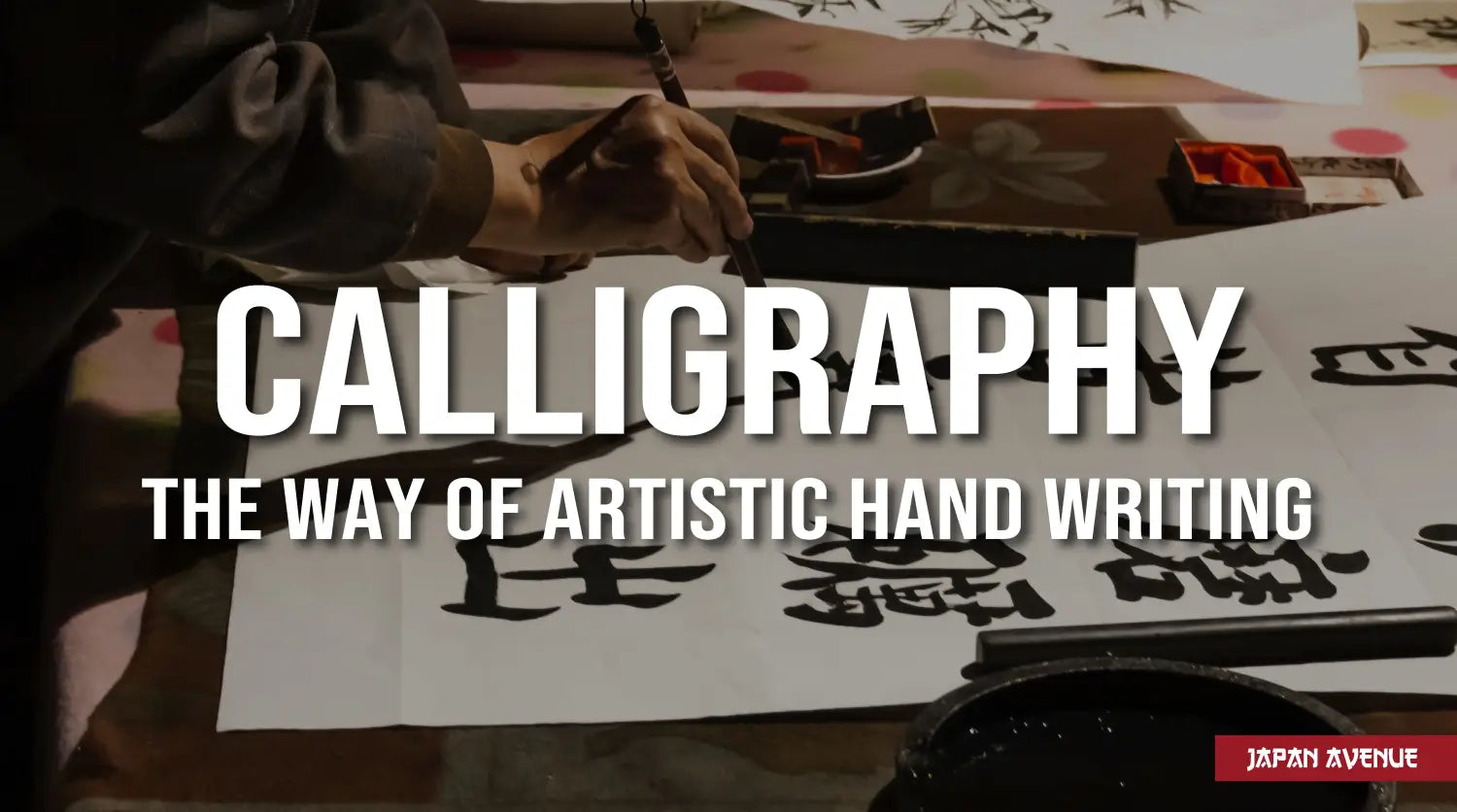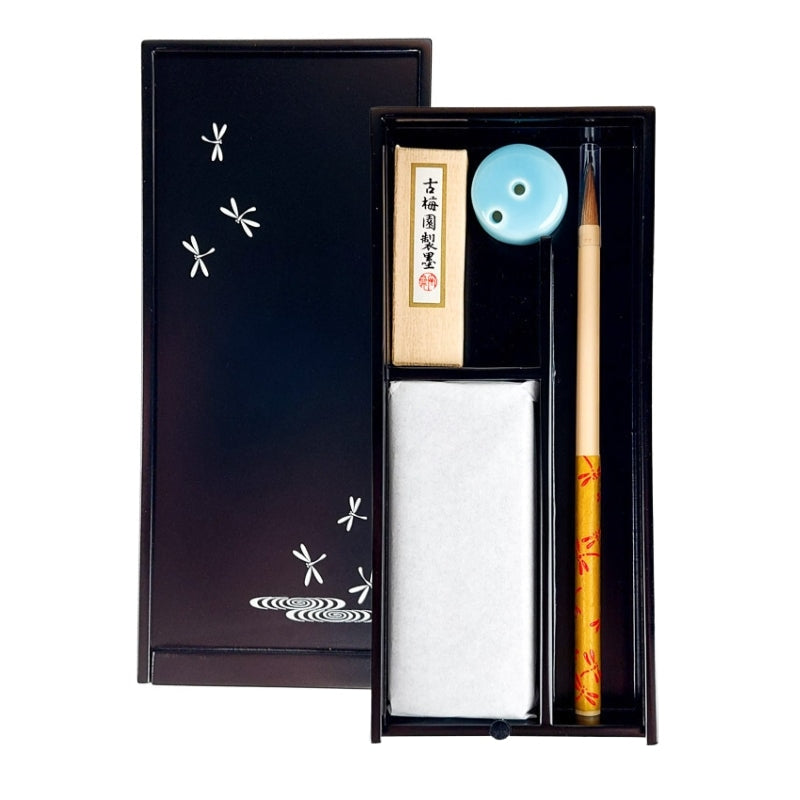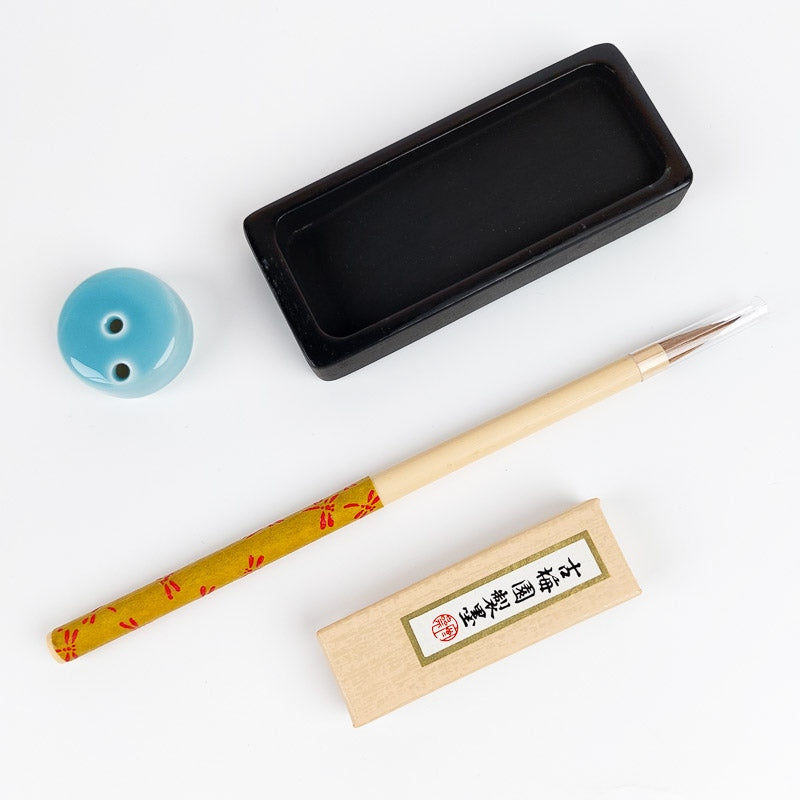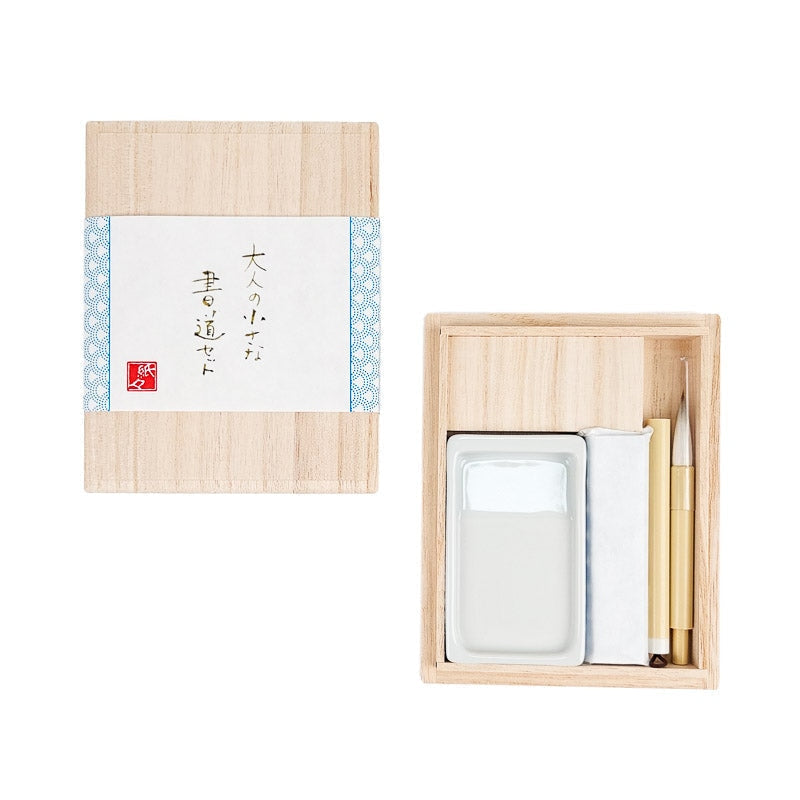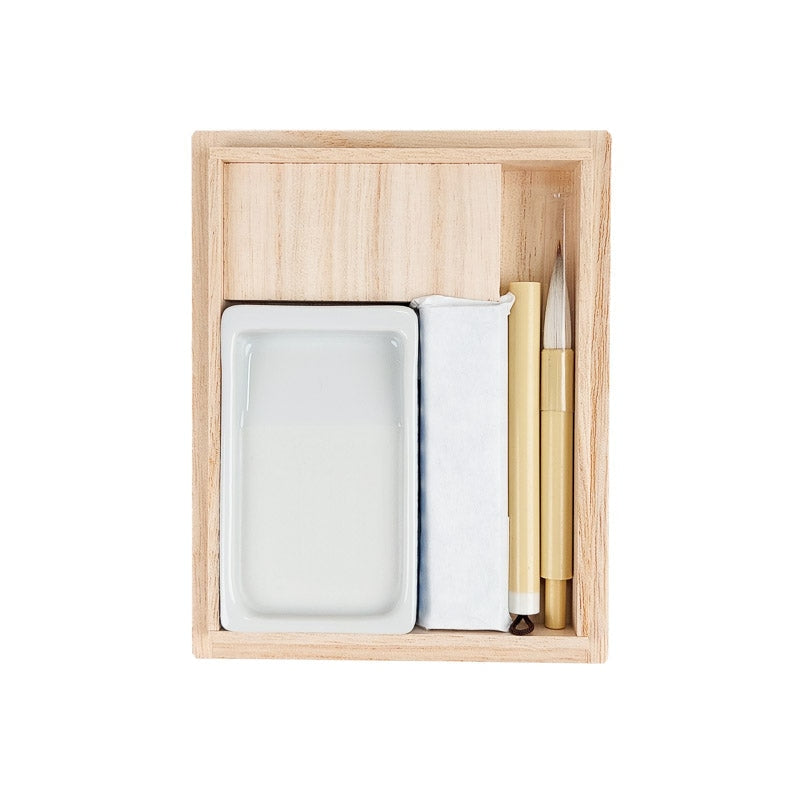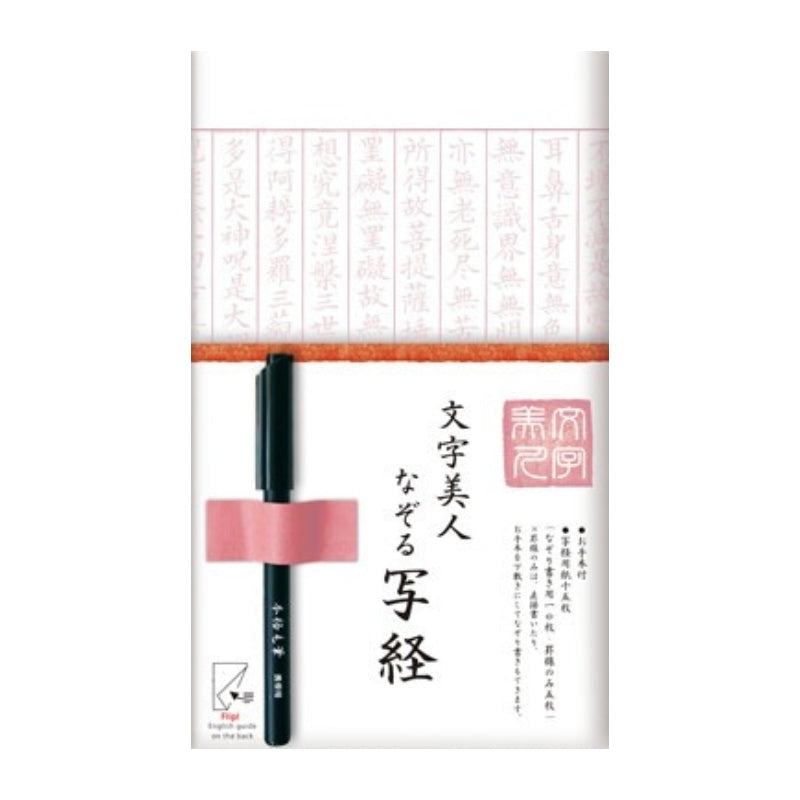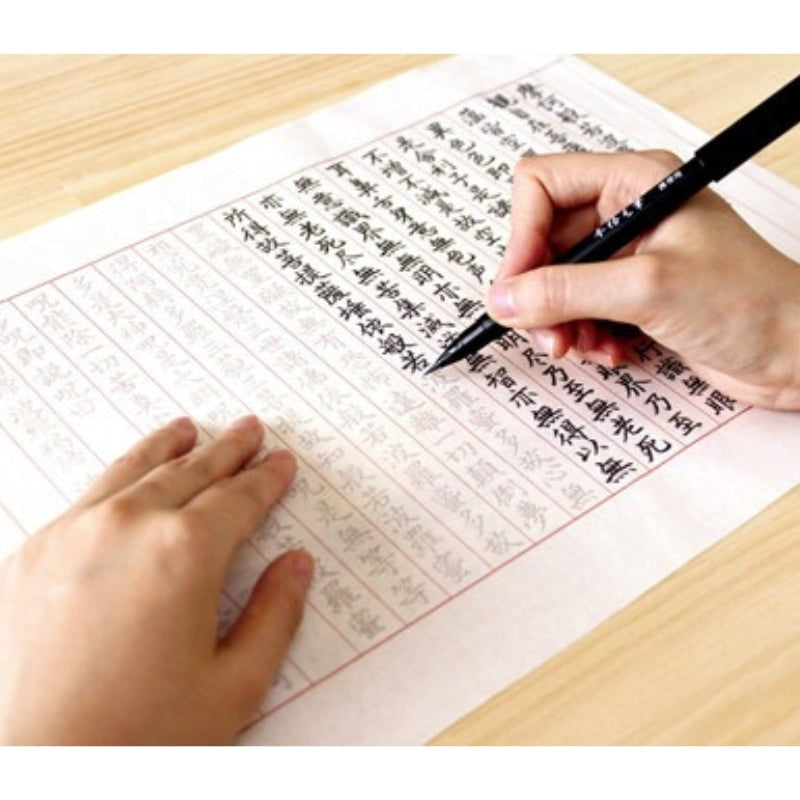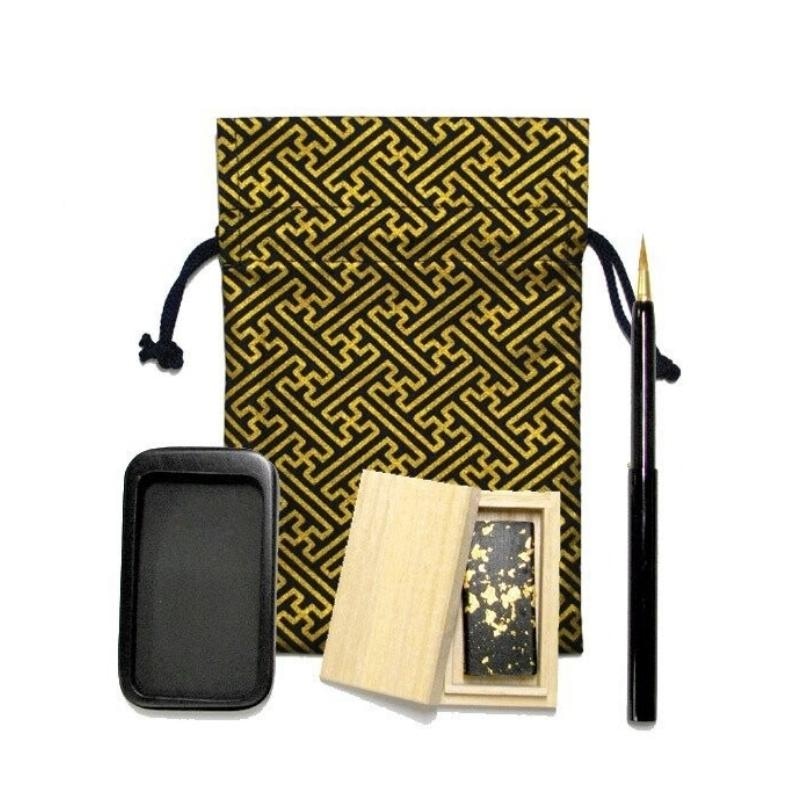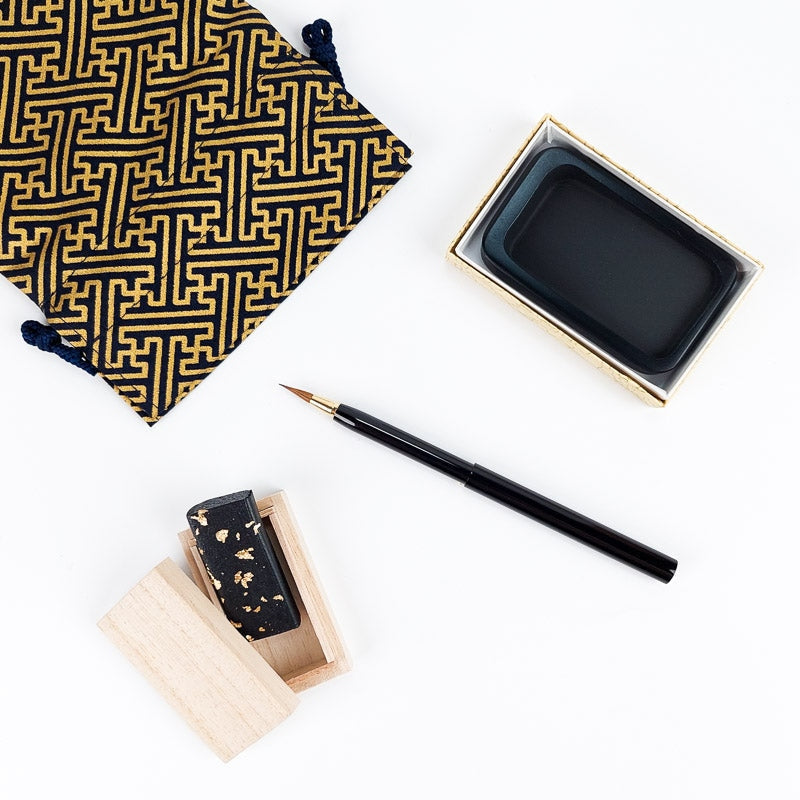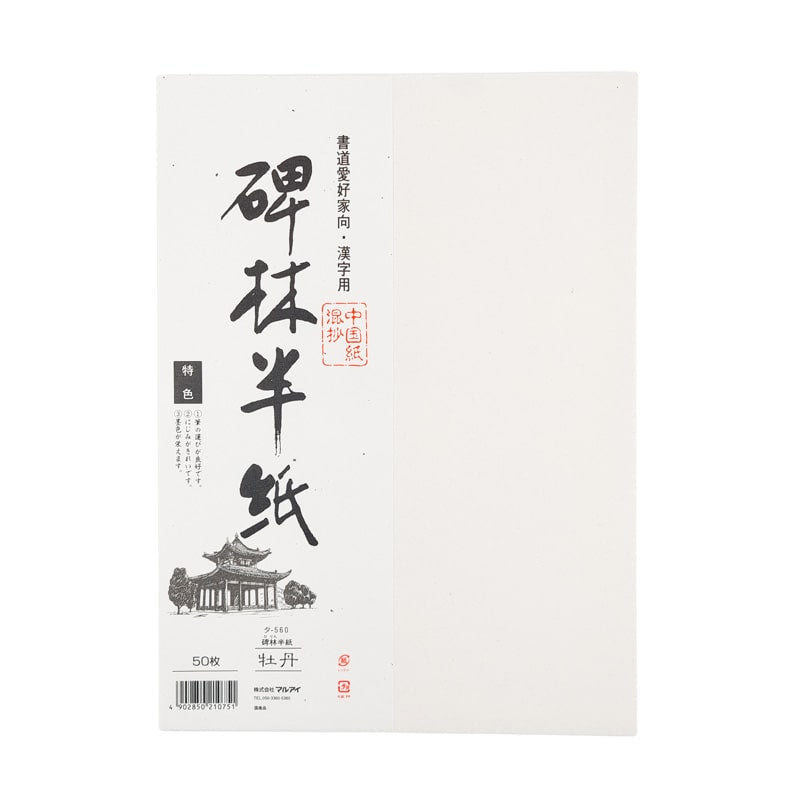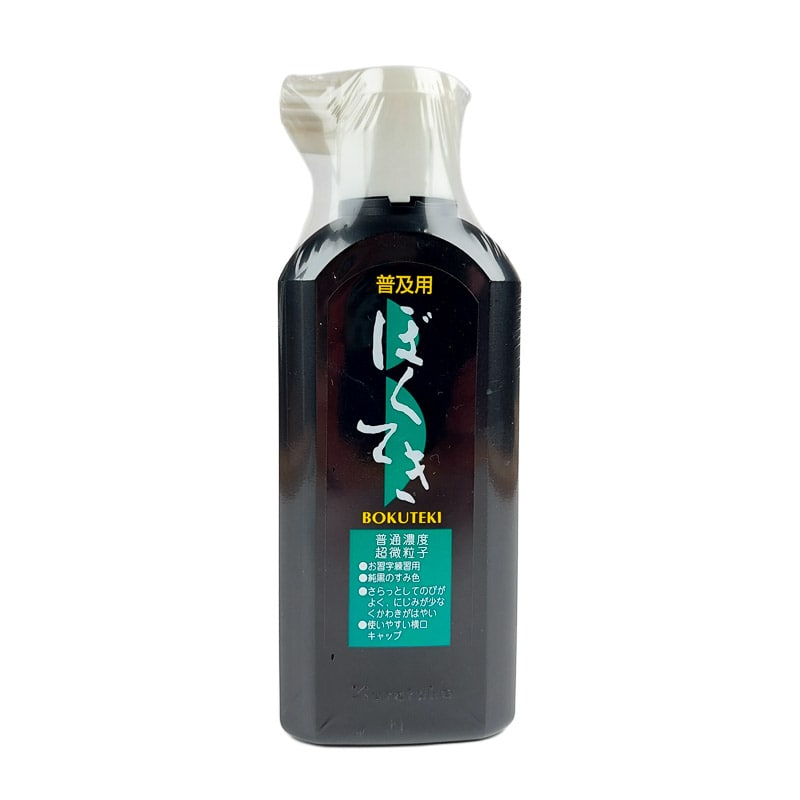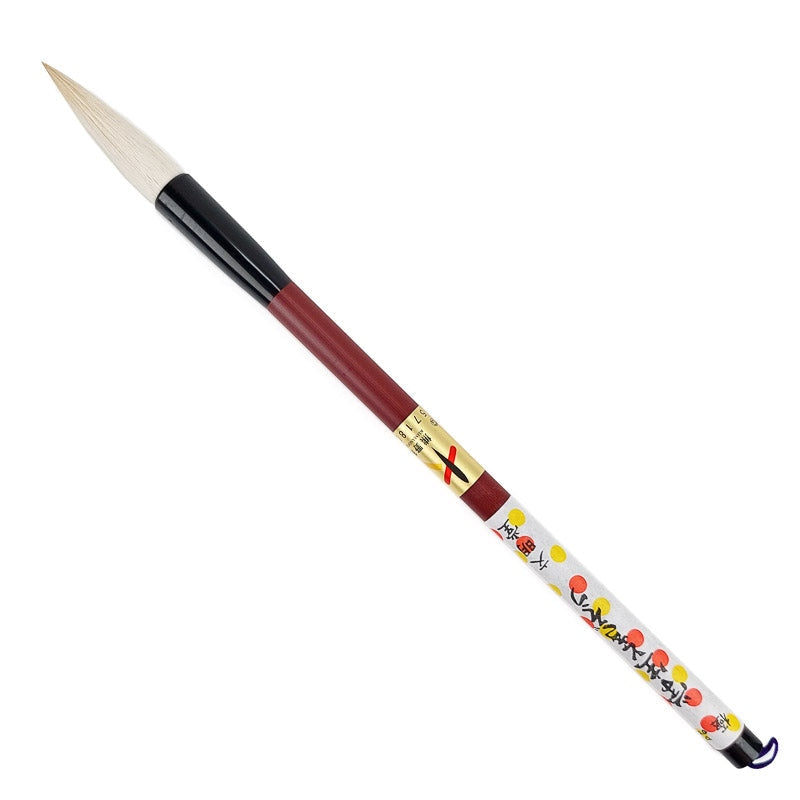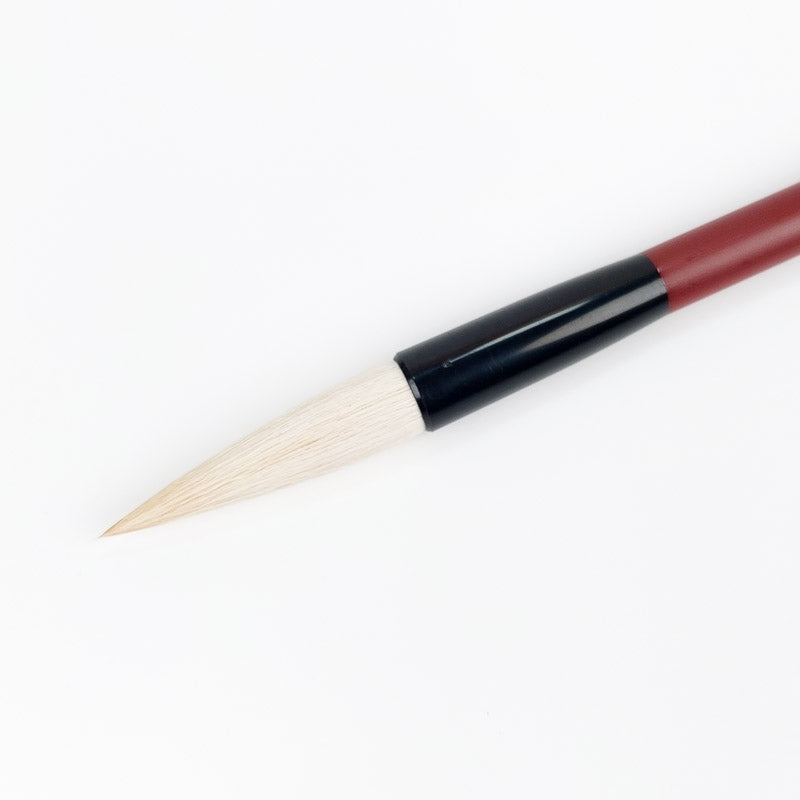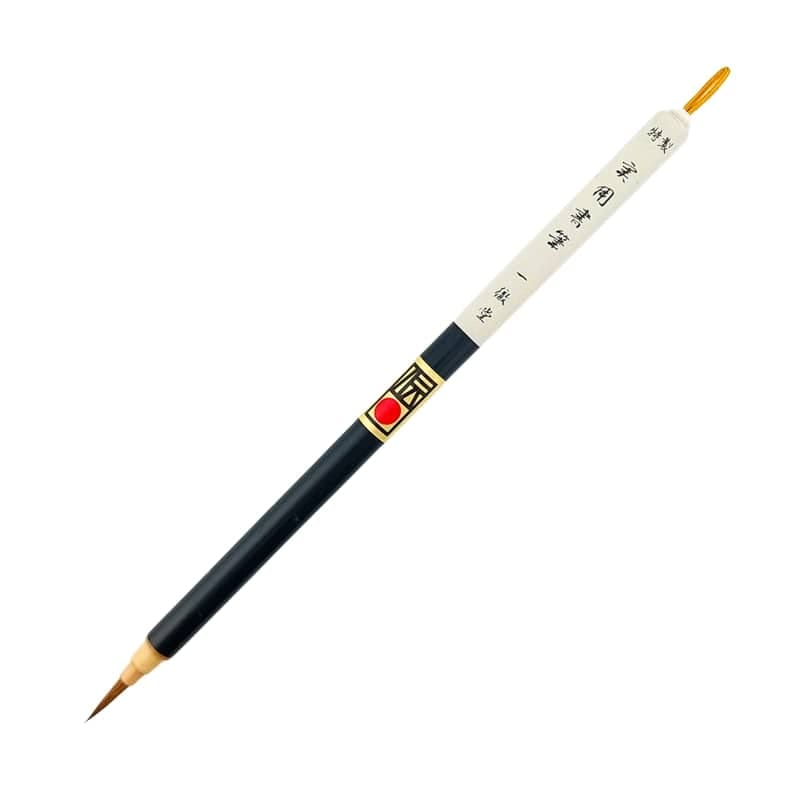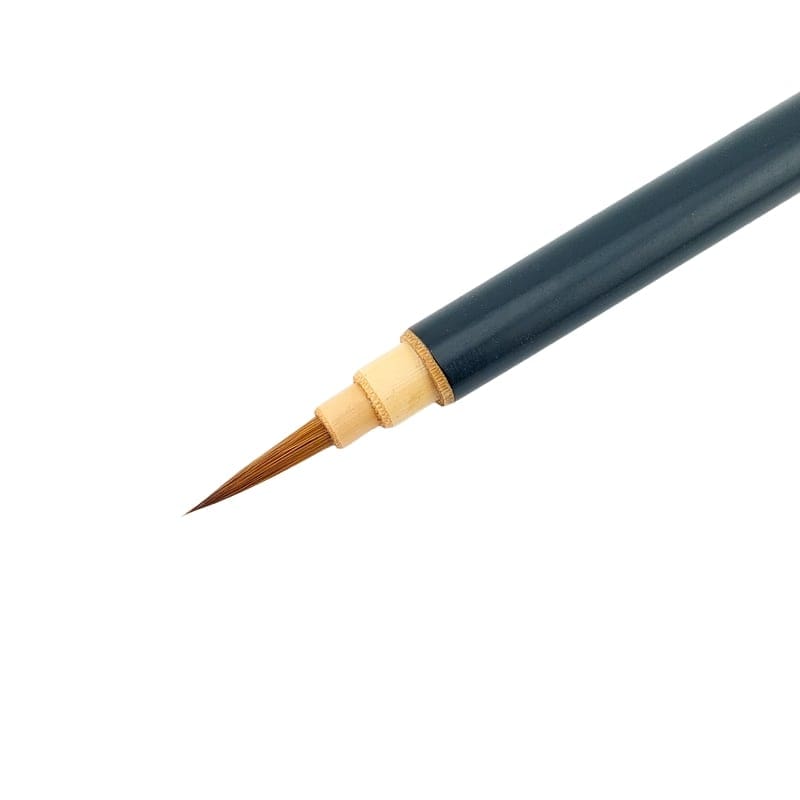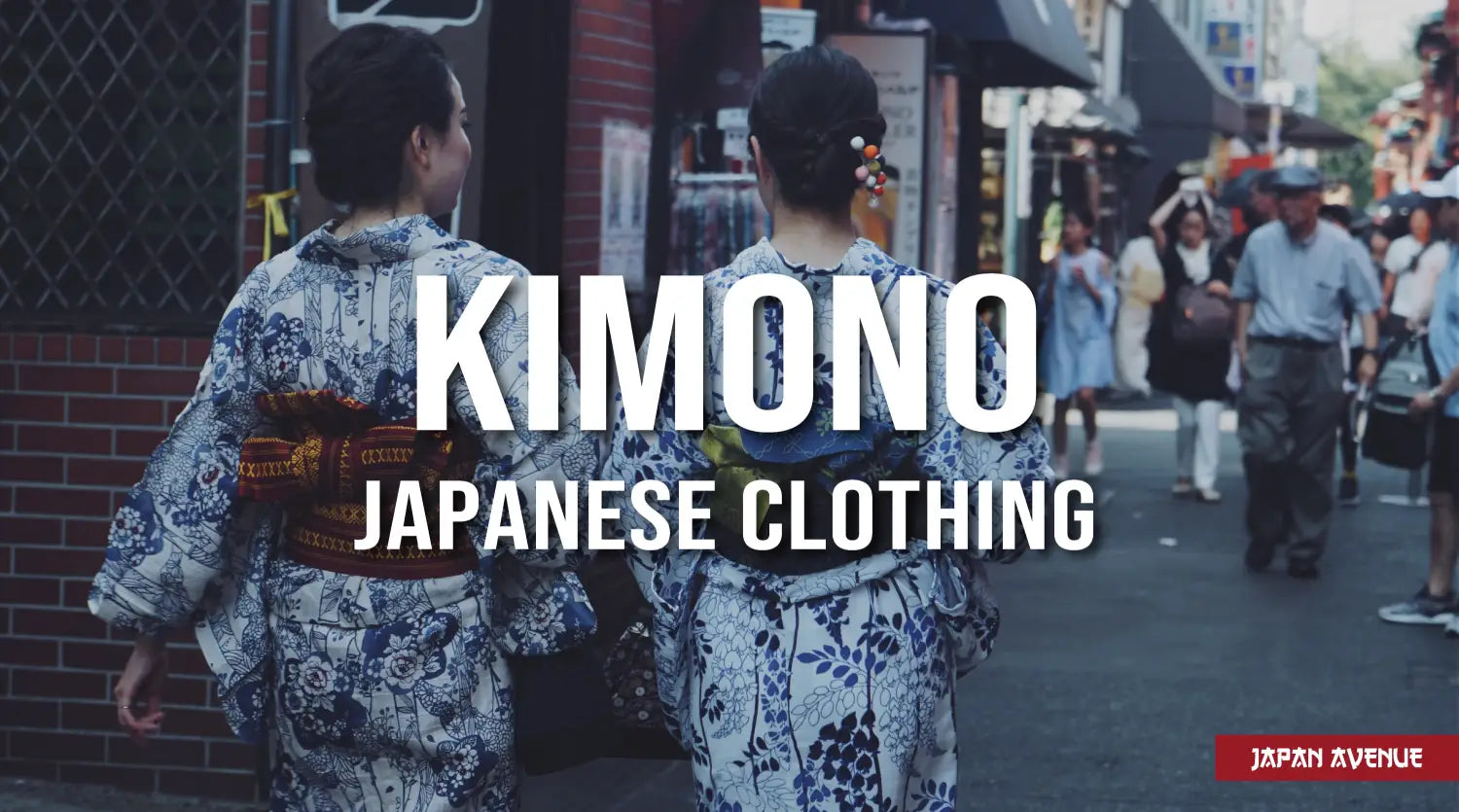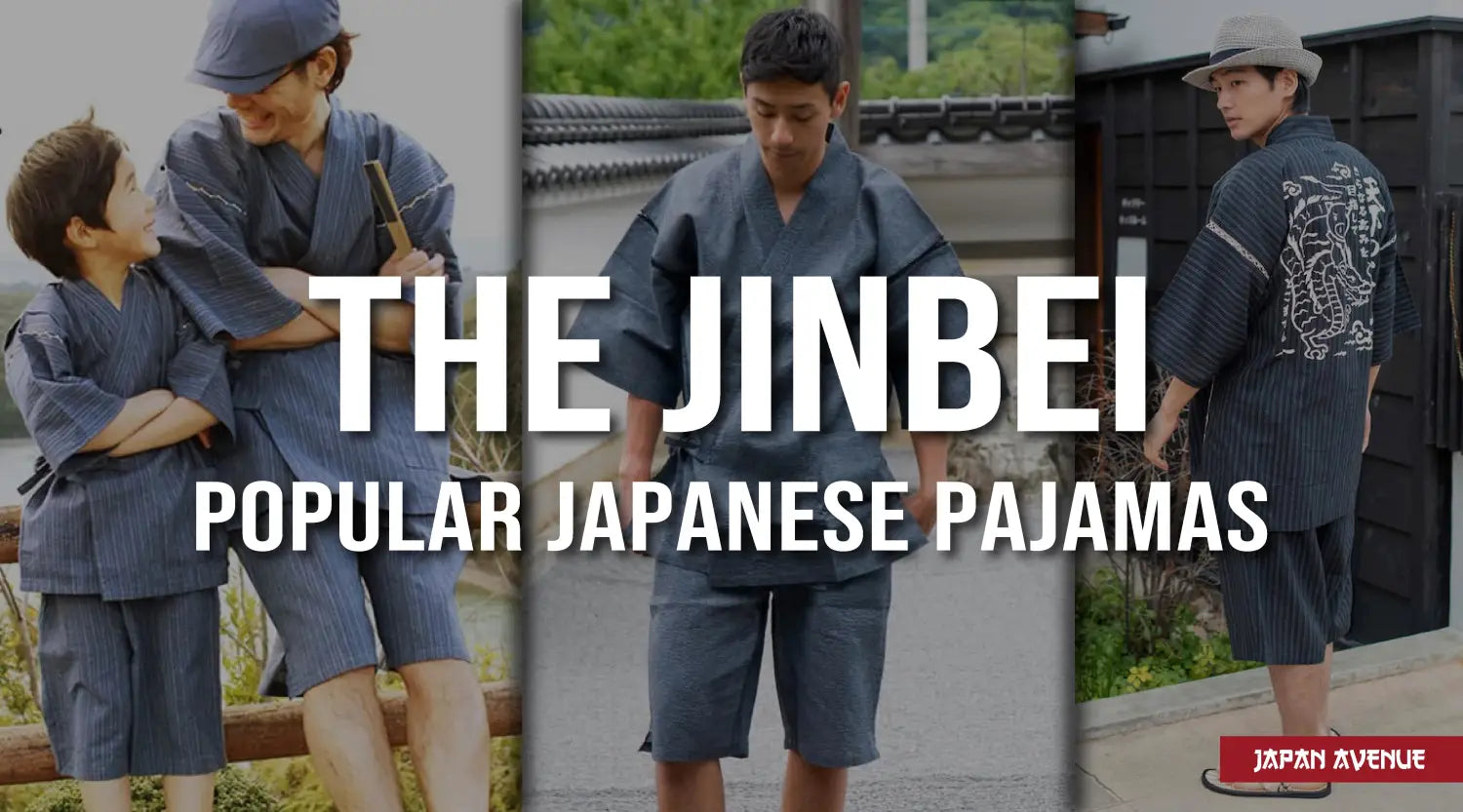Much more than just writing, calligraphy represents a true philosophy in Japan. One cannot be insensitive in front of the beauty of this Japanese art, transmitted from generation to generation.
Japanese calligraphy, or Shodo, is a traditional art that means "the way of artistic hand writing". It consists of carefully tracing elegant characters with a brush impregnated with Chinese ink. It is a cultural, decorative and spiritual discipline that aims to achieve harmony between body and mind.
Let's discover this treasure from Asia, the different Japanese writing styles, its link with Zen as well as the material needed.
📖 Shodo, the way of artistic hand writing
In Japan, art is considered a true spiritual ascent. As such, just like Ikebana, "the living flowers", or the martial arts, Shodo is a way to improve concentration, connect with oneself, and sharpen the mind, all while striving for perfect balance.

In Japanese, Sho means "to write" and dô "the way". Calligraphers in Japan are called shodoka or shoka. The way of writing requires a long apprenticeship and a lot of practice; the journey of becoming a great master is a long one.
The right pressure on the brush, the accuracy of the line, the curves and the dots are all details that turn this discipline into a real piece of art. The posture, the brush holding and the movements are particularly well codified. The gesture must be precise and perfectly mastered.
In addition, calligraphy characters carry a vital energy called "Ki". More than just a way to communicate or decorate one's home; Japanese calligraphy is a sacred art in the Land of the Rising Sun.
📌 The origins of calligraphy in Japan
Although the Chinese characters appeared about 3000 years ago, the history of Japanese calligraphy only began around the 6th century, with the arrival of Buddhism and Confucianism.
As the archipelago had no native writing system, Chinese characters (sinograms) were used to form kanji (Japanese language characters). Around the 7th century, monks were sent to China to learn about local religious practices, including Chinese calligraphy. Thus, little by little, the art of calligraphy was imported into Japan giving life to Buddhist texts, poetry and literature. It was primarily inspired by Chinese works and the Kaisho style.
At that time, three calligraphers were distinguished: the emperor Saga, the founder of the Shingon Buddhist school named Kukai and Tachibana no Hayanari, who were part of the famous "Sanpitsu" (the three brushes) group.
It is only at the end of the 9th century that this Japanese art starts to take off. Based on Japanese aesthetics, the Land of the Rising Sun created its own style of calligraphy.

Prints by Chobunsai Eishi (1756-1829) from the series "Beauties of the Pleasure Quarters as Six Floral Immortals" (1794-1795)
The Japanese written language developed with the introduction of Japanese syllabic alphabets or Kanas. The Hiragana are used as grammatical morphemes and for some Japanese words while the Katakana are used for foreign terms. These characters are widely used by the women of the imperial court in the Heian era before being adopted by men later on.
Among the great ladies who developed Japanese literature, we can quote the famous authors Sei Shonagon and Murasaki Shikibu. Notice that around the 10th century, calligraphy was reserved to the Japanese aristocracy and was studied by court scholars and samurais.
During the Kamakura period (1185-1333), Zen Buddhist monks had a strong influence on Japan. They invented the Bokuseki style inspired by the Song and Yuan dynasties that ruled in China. An art form that represents the calligrapher's state of mind at the time of his work through the practice of Zazen meditation.
Later on, Japanese calligraphy was no longer reserved only for the nobility, and extended to merchants as well. Calligraphy was used as a decorative element during tea ceremonies in order to encourage meditation. The way of beautiful handwriting was also taught to geishas along with traditional dances, literature, poetry or flower arrangement.
✒ The different categories of Japanese calligraphy
The first pictograms used in calligraphy were Chinese characters (kanji in Japan). They were used to write sacred texts of Buddhism which are still inspiring today's calligraphers.

▪ The Daijisho
This style consists of depicting one or two kanji highlighted graphically by modulating the lines, gestures and pressure of the brush.
▪ The Kanas
These Japanese syllabaries are simplified kanji, used for their phonetics. They are mainly used for writing poems or Haiku.
▪ Kindai Shibunsho
This is a combination of kanji and kana created to facilitate the understanding of ancient texts. Modern poems are often written in the Kindai Shibunsho style. This form of calligraphy is also commonly applied to transcribe foreign texts.
▪ The Eisho Zen
This is an abstract form of calligraphy that appeared in the 1950s. Artists express themselves freely and create true works of art without worrying about the usual conventions.
▪ The Tenkoku
The seal engraving which was formerly used to authenticate documents became an art from the 14th century. Thus, the Tenkoku "stamp" consists in engraving Chinese characters on a stone to make a vermilion red imprint.
📜 Calligraphy styles in Japan
Japanese calligraphy has 5 main styles, all of which originated in China. The different forms of writing go hand in hand with the material of that period.

▪ The Tensho style
This style appeared during the Qin dynasty before the invention of paper. The large seal or large sigil style originates from archaic writing on bones, scales or bronze. The small seal was the official form of writing of that time. The stylus used to engrave the characters gave a fine and regular appearance to the strokes.
▪ The Reisho style
This writing style was invented to facilitate the work of state officials and scribes. It is recognized by its slightly wavy line. (Bird's tail).
▪ The Shosho style
This is the popular form of writing. Strokes are simplified, yet this cursive style is considered the most complicated one to master in calligraphy. It is used in abstract art and Zen which reflects the energy of the author.
▪ The Gyosho style
This is a semi-cursive script born in the Han Dynasty under the brush of Liu De-Sheng before being taken over by a great Chinese calligrapher (Wang Xizhi). Gyosho is widely used for handwriting. In this style, the artist's brush is always on the paper.
▪ The Kaisho style
Appeared during the Wei and Jin dynasty and allowed a particularly legible writing to meet the needs of the power of that time. The signs are detached and strongly resemble print characters in order to facilitate reading. This is the most favorable style for starting calligraphy.
🗝 The tools needed for Japanese calligraphy
If you intend to take Japanese calligraphy lessons, you will need the 4 treasures of a writer. Namely, paper, a brush, an ink stick or liquid ink and an ink stone.

- Fude : This is the Japanese brush made of a bamboo wood handle and different sizes of brushes. (fine point, long hair, soft, stiff...)
- Sumi : Chinese ink is a mixture of soot from burnt resinous wood, vegetable oils and glue. It can be found in a liquid form or as a stick (sumi) created by hand with dried ink. Simply rub the stick with water to obtain a liquid ink of black pigment or sometimes colored depending on the type of wood used for its production.
- Suzuri : The ink stone is used to rub the stick for the preparation of the liquid ink. This stone is often made out of slate. It is the container where the brush is dipped into.
- Hanshi : These are thin sheets of paper conceived in an artisanal way in 25x35 format. Contrarily to China, they are not made of rice paper, but of mulberry fibers.
In addition to these four calligraphy tools, it's even better if you have a paperweight and a desk pad. If you'd like to try your hand at Shodo, or introduce a loved one to the practice, take a look at our Japanese Calligraphy Gift Sets.
🧘 Calligraphy and Zen philosophy
The Zen is part of Buddhism which uses meditation to awaken the mind and notably the Zazen posture. Japanese calligraphy is inspired by Zen philosophy as it establishes a true link between the body and the mind.

First of all, the control of breathing is an essential element to obtain a harmonious gesture. Breath is the source of the Ki energy that is expressed through the brush stroke. A deep breath will give a richer stroke. Next, Zen meditation allows you to clear your mind so that each calligraphy is the very essence of the heart and not of the mind, while putting aside the desire for perfection.
Lastly, know that in order to achieve true Zen calligraphy, these are the 4 basic principles:
▪ Harmony of composition
Harmony and balance are essential for achieving quality work. Thus, mastery of space and rules of composition are basics in Japanese calligraphy.
▪ The balance of forces
Varying the thickness of the strokes will also be sought. Curved lines are lighter and more fluid while straight lines are more pronounced.
▪ The reflection of the present moment
A work of art is realized in only one session. It transcribes the energy and emotion of the artist at that very moment. No question of returning to a piece of work afterwards. Everything that is started must be completed.
▪ The revelation of Ki
It is the power of life that makes calligraphy so beautiful. Without Ki, the drawings would have no soul. Before painting the characters, the artist must focus on his or her breath and the present moment. Then, project the perceived energy through the brushstrokes.
🤓 Learning Japanese calligraphy
If you are passionate about the art of Japanese writing, there are many books and resources on the Internet to discover calligraphic techniques, adapted to all levels. However, you can also learn this Japanese art with a teacher. Some offer home lessons while others will invite you to attend a group class.

The most effective way is by attending a workshop with a master calligrapher who will advise you on your posture, your gesture, your lines and all the subtleties that will make the difference in your work. The Shodoka will adapt to your level and will guide you towards the styles most adapted to your progress. Also, you will probably have an opportunity to watch him practice and observe his techniques.
Japanese calligraphy is an invitation to sensitivity, poetry and the beauty of the universe, which opens the doors to spirituality. Moreover, you should know that the practice of this Japanese art will offer you a great serenity and improve your concentration skills.
Are you ready to try it? Don't hesitate to have a quick look on the internet for a workshop near you.

